Ocean Week in Review – July 30, 2021: G20 Commits to Protecting the Antarctic, New Deep-Sea Shark Species Discovered, Pressure Mounts to Cancel Shark-Catching Tournament, and more…
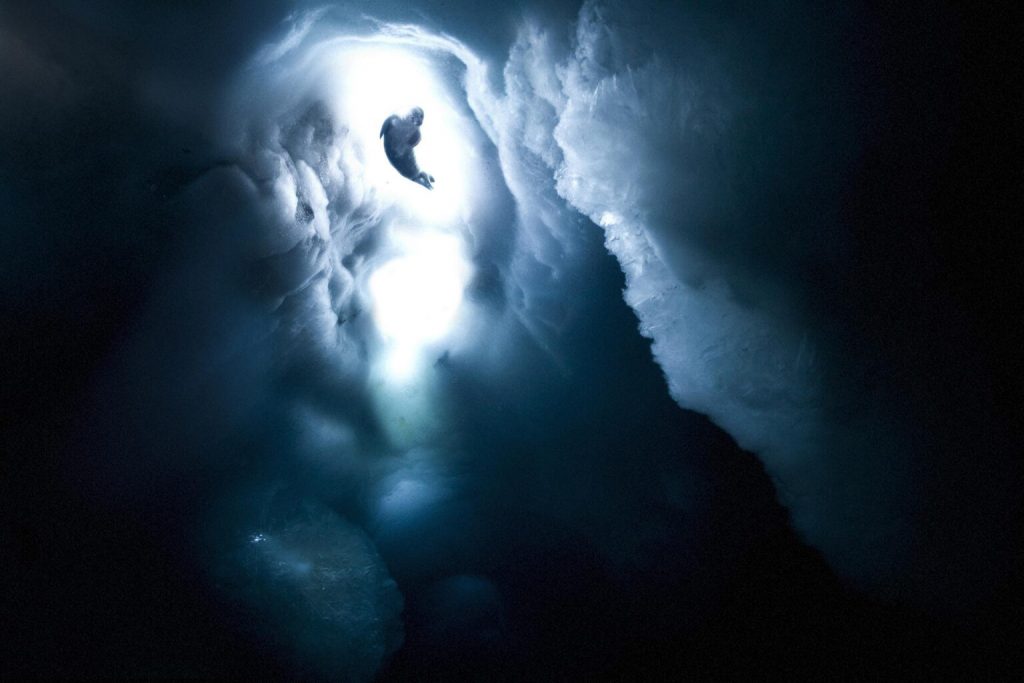
1. G20 Commits to Protecting the Antarctic
In an official communique following a G20 meeting in Naples, the world’s economic superpowers stated for the first time that protecting the Antarctic would align with science and with the interests of humankind. The move follows scientists’ warnings that climate change is pushing the region toward a tipping point.“Establishing a well-managed network of marine protected areas (MPAs) in this fragile region would be one of the greatest acts of ocean conservation and show that large MPA networks are possible in international waters. This would also protect areas vital to scientific research on climate change and provide the best opportunity for keystone species to adapt to warming and acidifying waters,” said Andrea Kavanagh of The Pew Charitable Trusts. Three large MPAs are under consideration to protect almost four million square kilometres and contribute toward the global target of protecting 30% of the ocean by 2030.
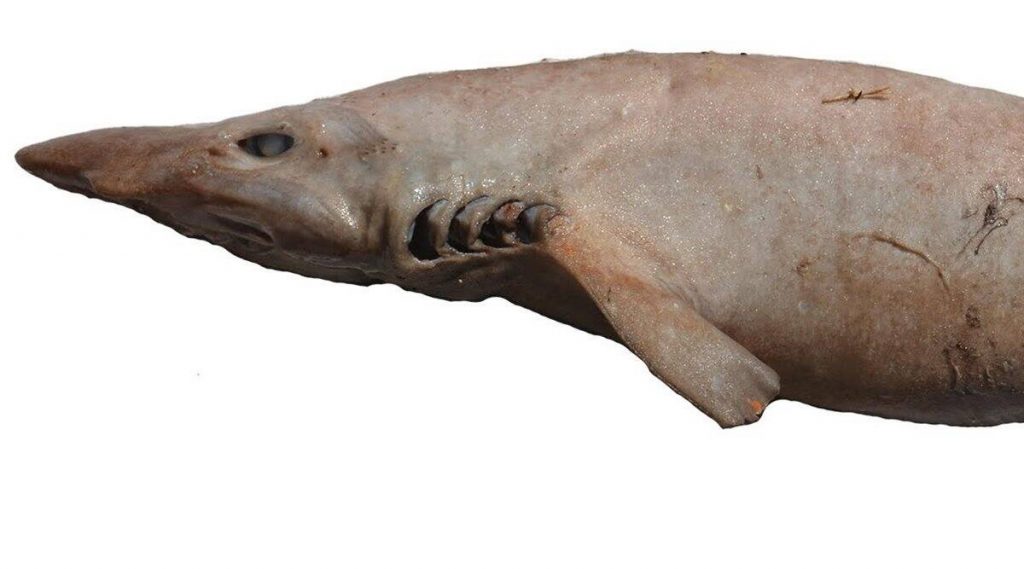
2. New Deep Sea Shark Species from Indian Ocean Discovered
Researchers from the Pacific Shark Research Center have revealed that deep-sea sharks found near Madagascar belong to a new catshark species. The new species has been named Apristurus manocheriani or Manocherian’s Catshark. Lead author of the paper published in Journal of the Ocean Science Foundation David A. Ebert said, “Sharks are a very diverse group and people do not realize that there are nearly 536 species. The discovery of this new deep-sea species also highlights how little we still know of the deep sea.” Catsharks belonging to the genus Apristurus have been found in almost all oceans, including the Arctic, but not the Antarctic. They are mostly found at depths from about 200–2200 metres and prefer slopes, seamounts, deep-sea ridges, and trenches. The newfound species belongs to the Apristurus spongiceps subgroup and is the second known species occurring in the western Indian Ocean.
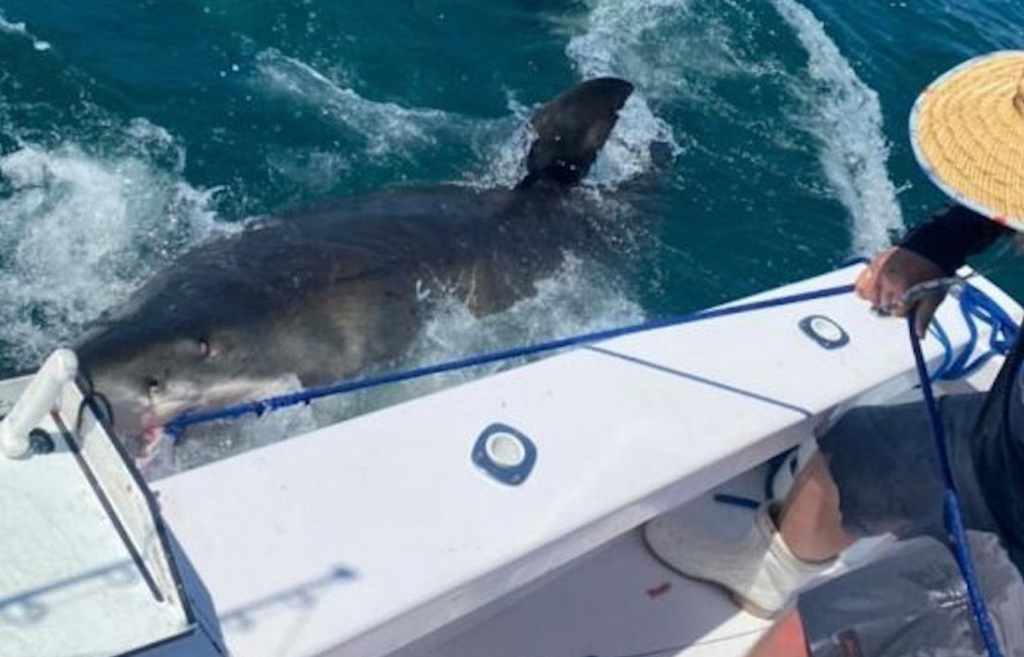
3. Pressure Mounts to Cancel Massachusetts Shark and Tuna Tournament
The Newburyport Shark and Tuna Tournament, where participants catch sharks for sport, has drawn the ire of director Eli Roth. Roth is calling for the tournament, and all similar tournaments across the country, to stop in an effort to protect endangered shark species. But the tournament’s director, Larry Collins, said the yearly event is actually saving sharks. The vast majority caught are tagged and released, and data about the shark is shared with the National Oceanic and Atmospheric Administration. “We can’t do this as entertainment,” Roth said of fishing for sharks. Shark and other fishing tournaments have created waves of controversy across New England with some cancelled after pressure from environmentalists and activists. Roth said the killing of one shark was one too many and that it was time for society to stop the common perception that it is acceptable to hunt sharks for sport.
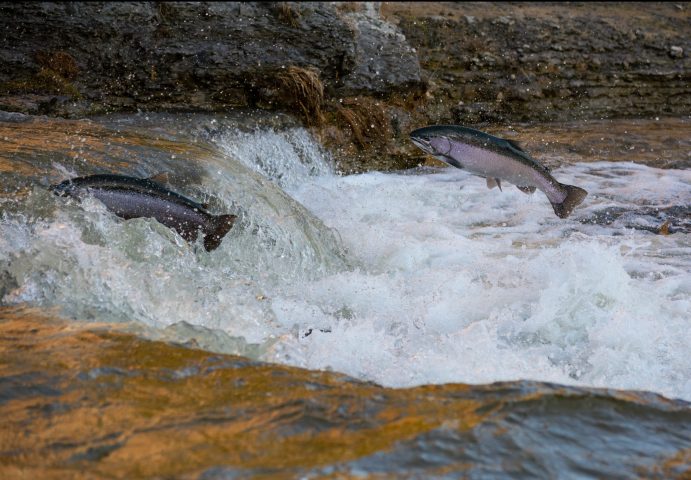
4. British Columbia Restaurants Remove Local Salmon from Menu
In Canada’s British Columbia (B.C.), restaurants are responding to the local salmon population decline by taking it off the menu. The move comes shortly after the decision by Fisheries and Oceans Canada (DFO) in June to close 79 commercial Pacific-salmon fisheries in B.C. and the Yukon. An alarming steady decline of wild salmon numbers over the past few decades prompted the DFO’s decision. Ocean Wise Conservation Association’s Sophika Kostyniuk explained that salmon populations are affected by climate change, industrial pollution, agricultural runoff, barriers to salmon migration such as dams, and potential overfishing. “Salmon is one of the most complex species to manage, to assess adequately and to really understand,” said Kostyniuk. Restaurants across British Columbia are responding by removing B.C. salmon from their menus, replacing them with native British Columbia salmon that have been farmed in sustainable New Zealand fisheries.
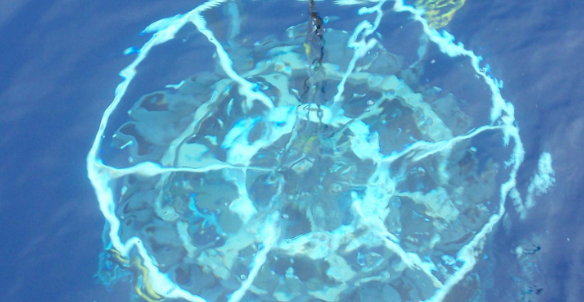
5. Tiny Organisms Shed Light on Ocean Nutrients
New research published in Communications Earth and Environment suggests that processes below the ocean surface may be controlling what is happening above. Researchers found that the ratio of nitrogen and phosphorus introduced from the subsurface ocean controls the balance of those nutrients in the marine microorganisms–in this study, phytoplankton–that form the foundation of ocean health. The new discovery could allow scientists to more accurately explore complex ocean processes. “This is the first time that we’ve looked across a broad range of ocean regions and directly measured the balance of nutrients in ocean microorganisms,” said Mike Lomas, lead author on the paper. “Now we can apply more realistic parameters based on what is actually driving marine dynamics to the computer models used to forecast ocean change.” Lomas hopes that this improved understanding of nutrients will better predict how oceans will respond to climate change.

6. Biotoxins in Shellfish Lead to Closure at Discovery Bay
Discovery Bay in Washington State is closed to shellfish harvesting due to high levels of marine biotoxins discovered in the water. Shellfish samples taken from the area contained elevated levels of the marine biotoxin that causes diarrhetic shellfish poisoning, resulting in the state Department of Health closing the beaches around the bay for all shellfish harvesting. Danger signs have been posted at public access points warning people not to consume shellfish from this area. Diarrhetic shellfish poisoning (DSP) can cause gastrointestinal illness, resulting from eating shellfish contaminated with toxins from marine plankton dinophysis. Symptoms of DSP include nausea, vomiting, abdominal pain, and diarrhea. The onset of symptoms can range from 30 minutes to four hours after consumption. While the closure is not necessarily routine, they do happen periodically due to the rise in natural toxins.
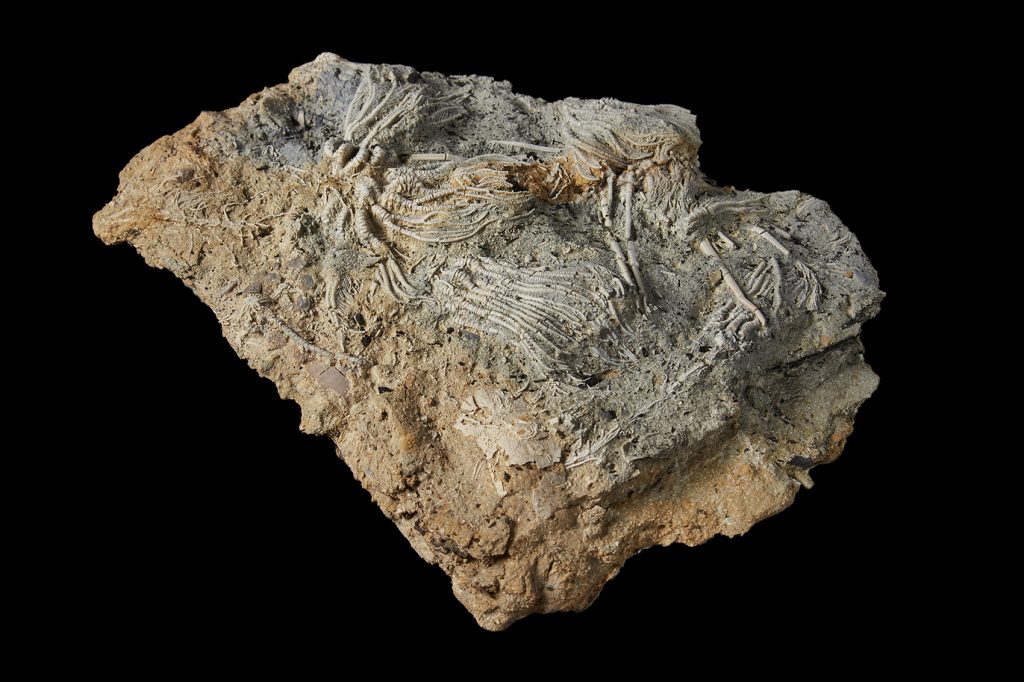
7. Huge Jurassic Seabed Uncovered in British Quarry
Paleontologists have uncovered thousands of perfectly preserved Jurassic fossils in Britain that could give unparalleled insights into ancient life. These specimens can tell us about their evolution and marine life in the mid Jurassic. Dr. Tim Ewin of the Natural History Museum said, “We’ve found the most beautifully preserved fossil sea urchins, starfish, sea lilies, and feather stars that I have ever seen from Britain, comparable to the best fossil sea urchin and starfish sites in the world.” Researchers have found many rare fossils in the quarry, including over 1,000 crinoids, which include feather stars and sea lilies. Their fossils are rare because the soft tissues that hold their skeletal plates together disintegrate quickly after death and hardly ever become fossilized. The pollen and wood found in the rocks might also tell us about contemporaneous climate changes and the rich plant species.

8. Rock Discovery Provides Clues to Mass Extinction Event 200 Million Years Ago
200 million years ago, the area of today’s United Arab Emirates (UAE) was underwater and undergoing a mass extinction event. Researcher Johannes Greiff, who analyzed rocks collected at the Ghalilah formation,said “The marine fauna is particularly affected by the very nature of the extinction, which was due to volcanic eruptions and an influx of carbon dioxide. There was ocean acidification.” Fossil remnants of corals have been found pre-extinction, but post-extinction, only chemical evidence of coral decay is present. The end-Triassic extinction could foretell the present day. Some scientists say the planet is experiencing a sixth mass extinction with habitat loss, climate change, and other environmental stresses. Greiff said massive carbon dioxide emissions today are “worrying as we know that it’s caused an extinction before. We see ocean acidification today and coral bleaching, and there are important parallels to this mass extinction.”

9. New Plastic Pollution Report: 29 Years to Save the Ocean
A new report published by the Pew Charitable Trusts states the world needs to implement drastic measures to stop plastic from reaching our oceans by 2050, giving us roughly 29 years to save the ocean. The report is a global analysis showing that we can cut annual flows of plastic into the ocean by about 80% in the next 20 years by applying existing solutions and technologies. We need to reduce plastic use, find substitutes for it, improve our recycling practices, expand waste collection, and prevent plastic leakage from disposal facilities. Many technologies already exist to address this challenge, but we are missing the infrastructure, policies, and financing to make the recommendations reality. Investment must shift away from the production of new plastic and towards the development of reuse and refill systems, sustainable substitutes, better recycling facilities, more collection infrastructure, and new delivery methods.
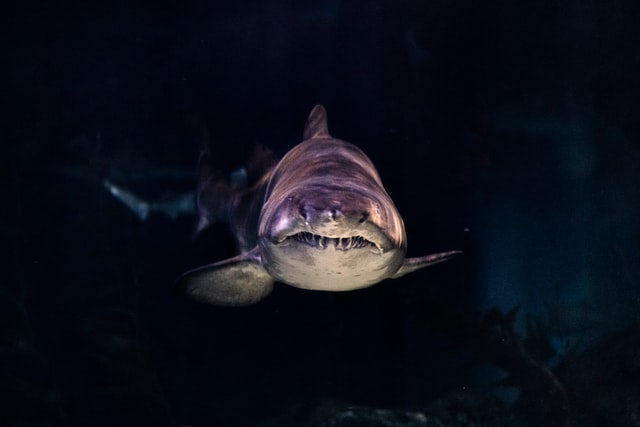
10. Don’t Call Them ‘Shark Attacks,’ Scientists Say
“Shark attacks” are slowly disappearing, at least as a phrase used by some in the United States and Australia who are rethinking how to describe the moments when sharks and humans meet. Shark scientists have long called for less sensational language: they want to change the public’s perception about animals whose population has plummeted by 71% since 1970. The disappearance of sharks threatens to upend marine ecosystems and critical sources of food. “I can understand the sort of pushback to what we’re talking about, as a shift to comical euphemism,” said Catherine Macdonald, a marine conservation biologist. “But I think that the shift is actually a push toward greater accuracy.” David Shiffman, marine biologist, said, “This is about being accurate without being inflammatory. Inflammatory coverage makes people afraid of sharks, and might potentially mean less support for their conservation and potentially support for their extermination.”
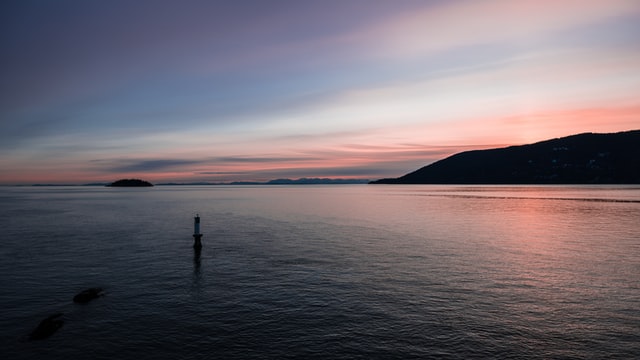
11. Canada Budget to Meet Marine Conservation Targets
In response to international scientific research about the measures needed to address biodiversity loss and global climate change, Canada has committed to increasing ocean conservation to 25% by 2025, working towards 30% by 2030. Under Budget 2021, the Government of Canada designated $976.8 million in funding over five years to reach ambitious marine conservation targets. This will help protect habitats, species and ecosystems and support the livelihoods of Canadians as part of a blue economy. To reach its targets, Canada will manage existing marine protected areas (MPAs) and Other Effective area-based Conservation Measures (OECMs) to ensure they achieve their conservation objectives; establish new MPAs and OECMs; collaborate with provincial, territorial, and Indigenous governments to advance effective ocean conservation; and take a leadership role in advocating for conserving 30% of the world’s oceans by 2030.
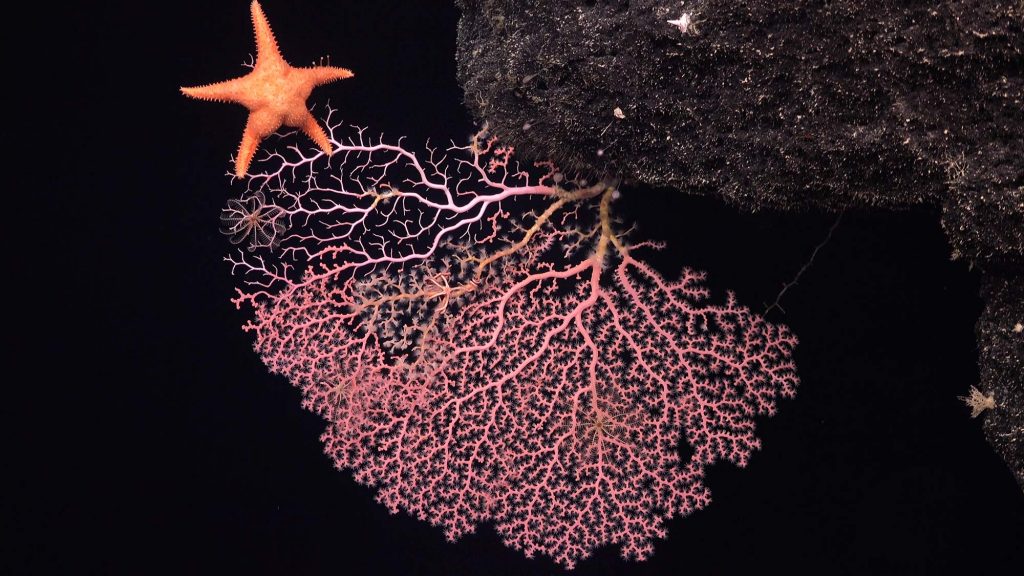
12. Deep Sea Expedition Yields New Species, Medical Possibilities
A recent deep-sea expedition of the remote Pacific Ocean yielded a look at the elusive glass octopus but also candidates for potentially 12 new animal species. The team also documented more than 100 species living symbiotically with deep-sea corals, including symbiotic relationships between corals and other organisms that had never been observed before. Scientists also collected samples of deep-sea bacteria that have never before been analyzed. Some of these bacteria aren’t recognized by the human immune system, making them effective vehicles for delivering therapeutics in people, without triggering an attack from the human immune system. The medical promise of these “silent” bacteria could even unlock a new avenue for financing marine exploration and conservation. Such protection is critical because so little is yet understood about the ecology of the deep-sea floor, yet it plays a large role in regulating Earth’s planetary processes and climate.
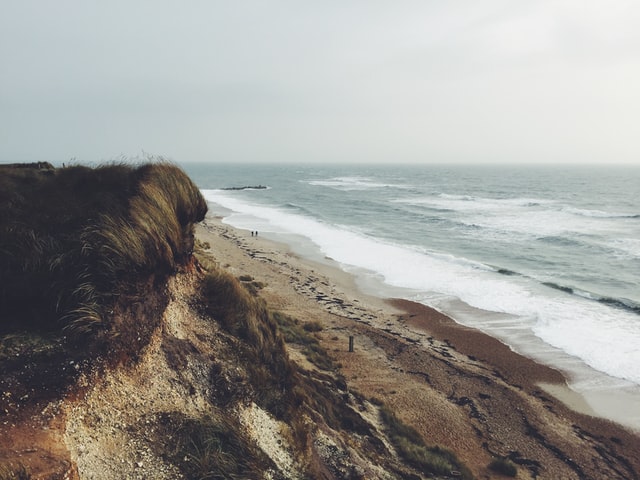
13. United Kingdom Seeks Input on Remediation for Marine Protected Areas
The United Kingdom Government is seeking feedback on compensatory measures for unavoidable development impacts on marine protected areas (MPAs). The aim is to ensure that a consistent level of protection is afforded to the unique habitats and species that form the MPA network. The UK is committed to protecting at least 30% of the world’s oceans by 2030, and the coastline is surrounded by an extensive network of MPAs covering 38% of the UK’s seas. The MPAs are one of the primary tools used to protect and restore the marine environment. No development should adversely impact the MPA network. However, in the event there are unavoidable developments in protected areas, compensation is significantly more challenging in the marine environment. The government is now seeking views on best practice guidance for developers on the principles for the design and implementation of these compensation measures.
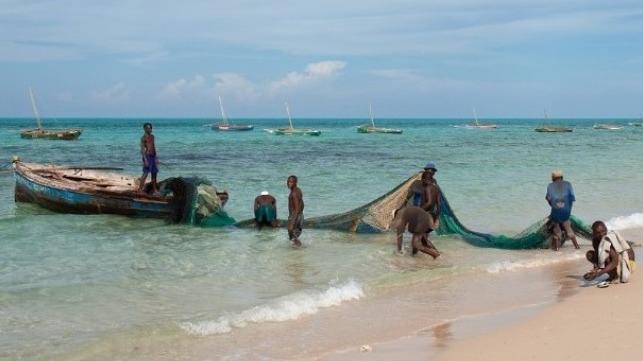
14. Marine Protected Areas Help Habitats, People in Western Indian Ocean
Marine protected areas (MPAs) are becoming a dominant strategy in ocean conservation, especially in low-income countries. In Africa, where many people depend on natural resources, their protection is paramount in poverty alleviation. A report released by the Western Indian Ocean Marine Science Association tackles the question of how effective MPAs are in protecting threatened coastal habitats. So far, Western Indian Ocean (WIO) countries have declared 143 MPAs. Locally Managed Marine Areas (LMMAs) enable coastal communities to collaborate with government to protect coastal resources, fostering inclusivity of the indigenous coastal communities. Since the turn of this century, the objectives of MPAs have evolved from focusing on conserving inshore fish stocks to covering much larger offshore areas, with diverse zoning schemes that permit multiple uses. Still, multiple challenges abound. Many MPAs in the area lack the resources to fulfil their functions.
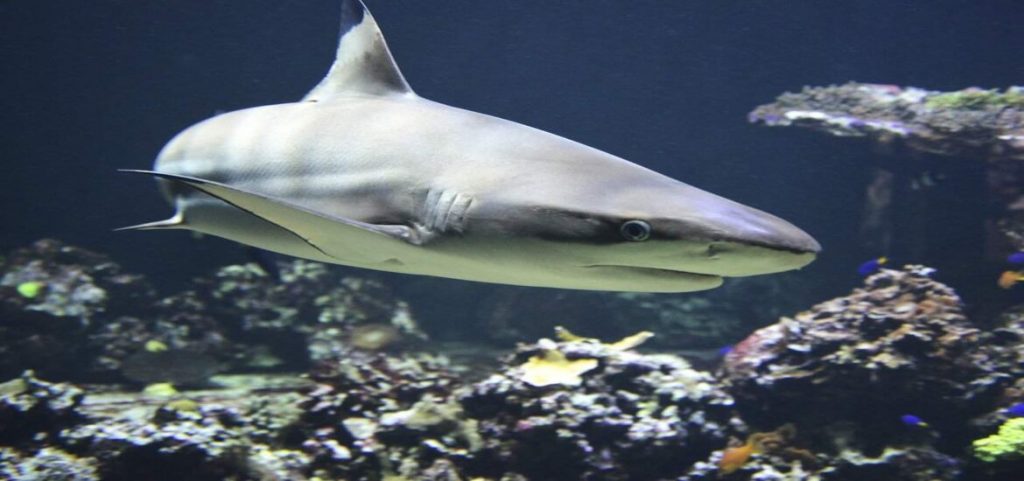
15. In Thailand, Reef Sharks Slaughtered Wholesale
Pictures of a large number of blacktip reef sharks being sold openly at a fish market in Thailand have sparked outrage among environmentally conscious Thais and local conservationists. Sharks play an important role in regulating species dynamics. In areas where their numbers diminish or their species distribution changes, shifts take place in the composition of species and their abundance. Habitats also can be altered. Hungry rays roaming the waters and hunting for food could uproot seagrass at higher rates, leading to poorer quality nursery grounds for fish, for example. These sharks are listed as near-threatened by the International Union for the Conservation of Nature. Yet in Thailand, they are not protected. Local fishermen can hunt and sell them in markets freely. Despite the outrage over the photos of them being sold in large numbers in Phuket, there isn’t much that can be done.

16. Boston Mural Festival Engages Residents on Ocean Conservation
PangeaSeed Foundation’s global Sea Walls: Artists for Oceans program returns to Boston, Massachusetts to create 11 new ocean advocacy murals and host public events to increase interest and engagement in marine stewardship within the community. The New England Aquarium, a global leader in marine research and education, has joined forces with the creators of the 2021 festival to amplify the critical environmental messages depicted in the new murals. Artists will team up with marine scientists from the Aquarium’s Anderson Cabot Center for Ocean Life to gain a deeper understanding of the environmental issues facing the Gulf of Maine region, in which Boston sits. “This is an incredible opportunity to engage residents of the City and visitors to Central Wharf about the species and habitats we are working to protect,” said Vikki N. Spruill, president and CEO of the New England Aquarium.

17. Environmental Groups Question Deep-Sea Miner’s Disclosures
Transparency and environmental advocates are raising concerns that the company DeepGreen Metals Inc. is misleading investors through its financial disclosures. The company wants to delve 3 miles below the surface of the Pacific Ocean to collect potato-sized rocks off the seafloor that contain nickel, cobalt, copper, and manganese, all of which are key components of electric vehicle batteries. Greenpeace and other groups say the company has not been forthcoming about the potential environmental impacts of mining the deep sea in their disclosures to the United States Securities and Exchange Commission (SEC). In a complaint to the SEC earlier this month, Greenpeace, the Deep Sea Conservation Coalition and Global Witness said DeepGreen has downplayed the potential environmental impacts and “threatened to mislead the investing public concerning the future profitability of the company.” DeepGreen contends that the Impacts on the ocean ecosystem cannot be definitively known.
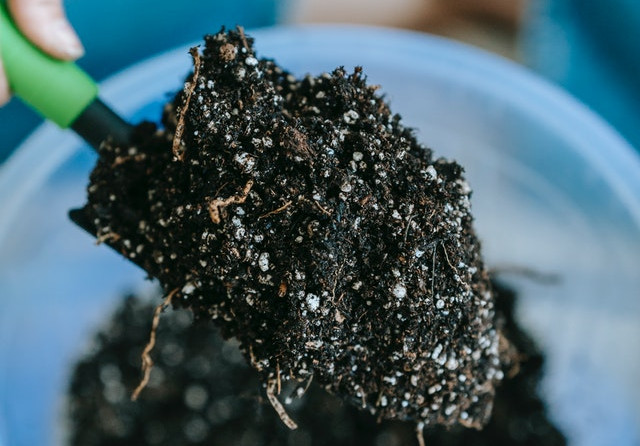
18. Florida County Commissioner Seeks Fertilizer Ban
Cities across the Tampa Bay, Florida area have been scrambling in recent weeks to combat the impacts from red tide on the region’s waterways. The situation has become so severe St. Petersburg city council members have asked Governor Ron DeSantis to declare a state of emergency. Between June 1 and September 30, fertilizer application is banned in Pinellas, Manatee, and Sarasota counties, as well as the city of Tampa. Meanwhile, Hillsborough Commissioner Mariella Smith is pushing to create a stricter ordinance: banning fertilizer use from June 1 through the end of hurricane season, November 30. Increased rainfall during the summer months increases runoff into area waterways. Nutrients found in fertilizers can wash into storm drains, which flow into creeks, lakes, the bay, and ultimately into the Gulf of Mexico. Those nutrients fuel the red tide organism, leading to the massive blooms in the bay.
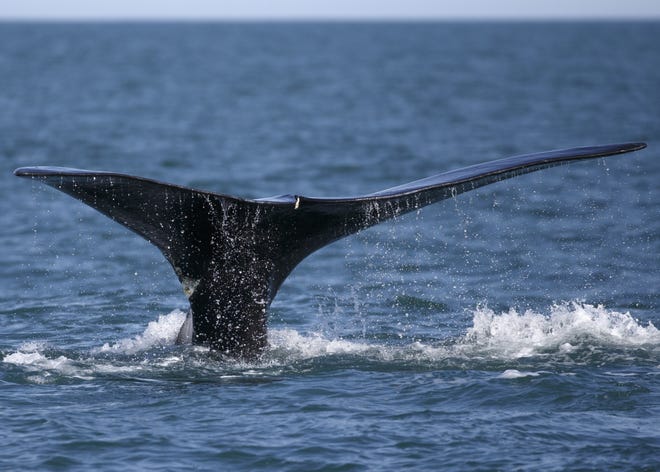
19. Study Finds Speeding Boats Endanger Right Whales Off Cape Cod
A report from Oceana shows most ships are moving too fast in waters where North Atlantic right whales feed and migrate. Researchers estimate there are only about 360 right whales remaining. To save the whales, boats must slow down. Oceana analyzed boat speeds from 2017 to 2020 through speed zones along the United States Atlantic coast established by the National Oceanic and Atmospheric Administration (NOAA) to protect right whales. The study looked at 8,714 vessels and 26,608 vessel transits over three seasonal management areas. The analysis over a four-year period studied 9,645 vessels that were over 65 feet long and subject to the speed restrictions. Collisions with vessels and entanglements in fishing lines are the leading causes of injury and death for right whales. Going forward, Oceana would like to see NOAA establish new mandatory speed zones.
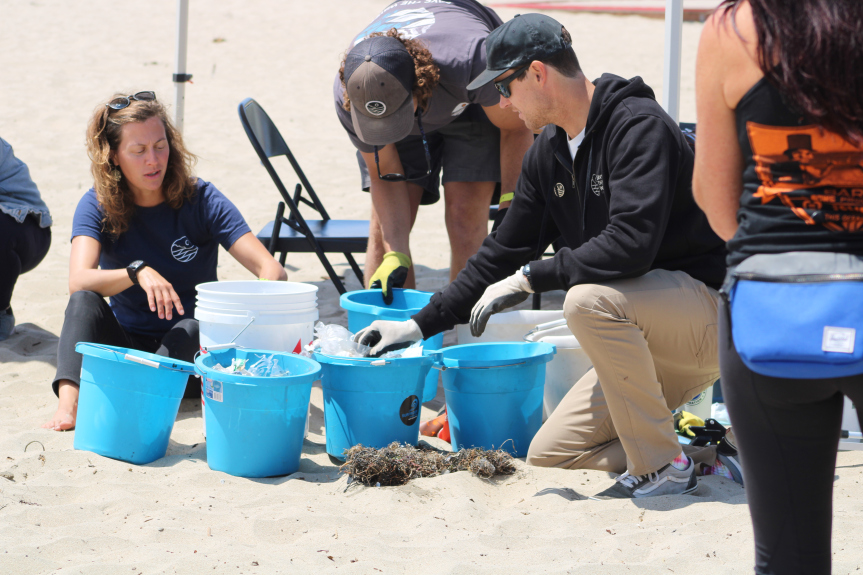
20. Beach Cleanup Campaign Brings Surfers, Locals Together
Kona Brewing, Save the Waves, surfer Anna Gudauskas and surf photographer Sarah Lee have partnered on a campaign to spread the message of ocean conservation. “We strive to promote natural resource protection,” Kona Brewing’s Brooke Schwab said. “We’re hoping to inspire people to get out and clean their own local communities.” The campaign stops in two cities a day during its 10-day tour. In each city, Gudauskas rides a few waves as Lee photographs – if the surf allows – before they lead a beach cleanup. While it’s common for surfers to grab some trash on the way off the beach, the Catch a Clean Wave campaign has served as an opportunity to dedicate more time to giving back to the ocean. The campaign has also focused on raising awareness about keeping beaches and oceans clean, a mission integral to Save the Waves.
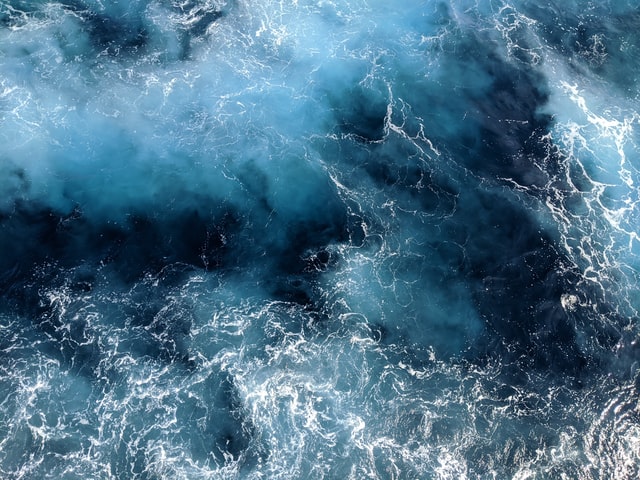
21. Groups Challenge Seismic Oil and Gas Testing in the Gulf of Mexico
Natural Resources Defence Council (NRDC) and partner groups have sued the National Marine Fisheries Service (NMFS) over the previous U.S. president’s decision to allow extensive seismic airgun testing in the Gulf of Mexico. Most at risk is an endangered whale species with just 50 surviving individuals. The lawsuit claims that the agency violated multiple acts when it approved the testing, which is used to search for oil and gas deposits beneath the ocean floor. The noise produced by the tests travels widely through the ocean and disrupts marine animals, impairing their ability to communicate, feed, and reproduce. “The level of damage to the marine mammals of the Gulf is unacceptable. It could contribute to the extinction of Rice’s whale and would undermine the recovery of many populations of dolphins and whales harmed by the BP Disaster,” said Cynthia Sarthou, Executive Director of Healthy Gulf.
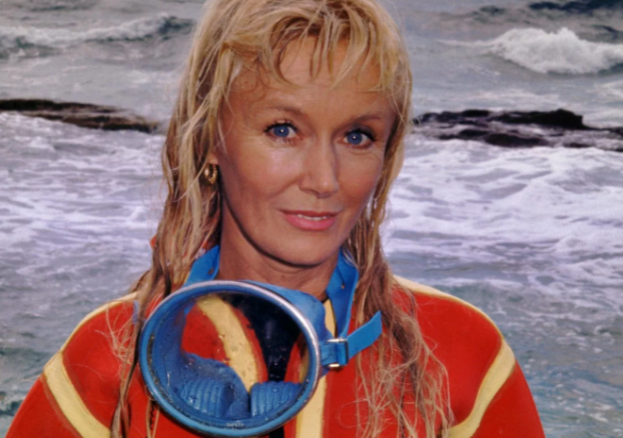
22. Fellow Women Divers Hall of Fame Member Valerie Taylor Reflects on Career
“Every dive has the potential to be a great adventure,” says Valerie Taylor in the new documentary Playing with Sharks. Taylor, who still dives, says she “decided to prove that sharks are not out to get us.” Taylor started diving at 21 and, like Sea Save’s founder Georgienne Bradley, is a member of the Women Divers Hall of Fame. In her prolific career, she and her husband filmed scenes for Jaws, were some of the first to dive cageless with sharks, and have appeared in National Geographic. “It brought back memories,” she says of watching a preview of the documentary. “It can never be done again or filmed again, because that life and that ocean doesn’t exist anymore.” Indeed, Taylor believes humans are “going backwards” at conservation. “The only thing that can save all this marine life is nature.”
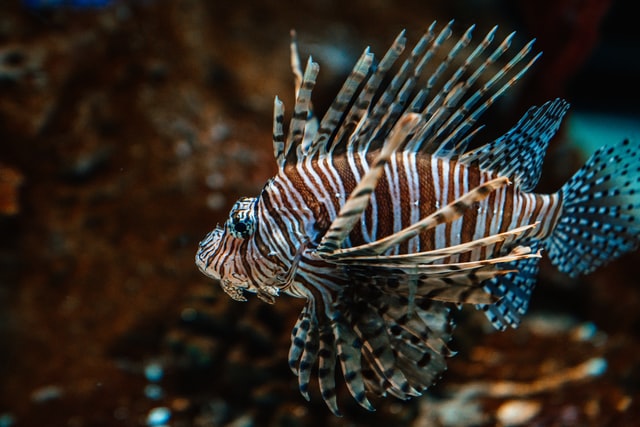
23. Targeted Removals Can Help Manage Invasive Lionfish
A new study finds that targeted removals can be effective in suppressing invasive lionfish populations within protected coastlines of the Mediterranean Sea. However, removals need to be combined with long-term monitoring by communities and conservationists to ensure their timing and location achieve the best results. Scientists partnered with trained divers to conduct removals and surveys over six months. Between 35 and 119 lionfish were removed per day by divers at each protected site off the coast of Cyprus. Divers monitored the sites and found that, in some locations, population numbers recovered within three months. Senior Author Jason Hall-Spencer said, “If implemented correctly, removal could protect selected areas from the adverse effects of lionfish, while at the same time help to establish rich and deep links with local communities, strengthening responsibility and surveillance at corporate and social levels, and stimulating public environmental awareness.”
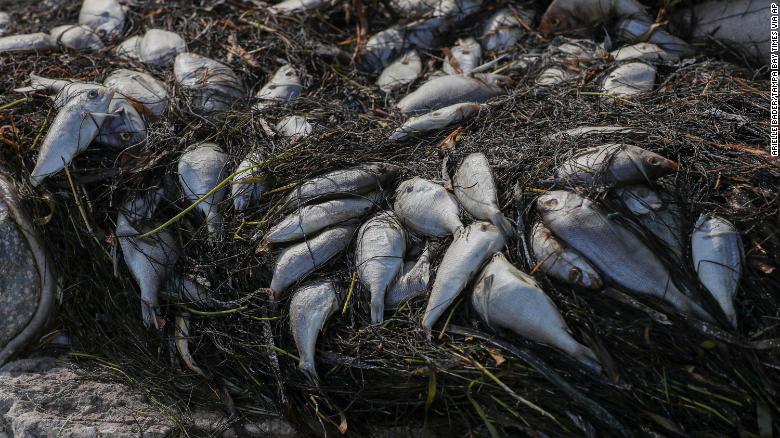
24. Red Tide Contributes to 600 Tons of Dead Marine Life
A red tide has invaded Florida’s Gulf Coast, killing more than 613 tons of marine life and fish. The Florida Fish and Wildlife Conservation Commission said it had collected 132 samples from the region and found high concentrations of the bacteria in the water. Fish kills suspected to be related to red tide were reported in multiple counties over the past week. Scientists feared a large bloom after the Piney Point phosphogypsum stack dumped nutrient-rich wastewater into Tampa’s waters in April. The elevated concentrations of nitrogen and phosphorus were particularly concerning because they fuel phytoplankton growth, which can lead to a potentially toxic algal bloom. “While it’s unlikely that we will be able to make a direct correlation between environmental harm manifested, it would be absurd to suggest that the impact isn’t significant,” Justin Bloom, founder of the Suncoast Waterkeeper environmental organization, said.

25. Officials Seek Public’s Help with Marine Wildlife Harassment
In Hawaii, officials are asking the public to document and report any instances of monk seal or other marine wildlife harassment after distressing videos appeared on social media. Over the past two weeks, the state Department of Land and Natural Resources has received 31 tips regarding monk seal harassment. There were an additional 10 tips regarding sea turtle harassment and two tips of people pursuing Hawaiian spinner dolphins. Marine species in Hawaii, like the monk seal, are protected under both federal and state laws and regulations. Under state law, monk seal harassment is a felony that carries one to five years behind bars. The state’s Environmental Court can also assess a fine up to $50,000. These laws protect and conserve populations for generations to come. Hawaiian monk seals in particular are critically endangered; there are only about 1,400 individuals left in the population.

26. World Heritage Committee: Great Barrier Reef Won’t Be on ‘In Danger’ List…for Now
After a global lobbying effort from Australia, the Great Barrier Reef will not be placed on a list of world heritage sites “in danger”. The World Heritage Committee ignored a scientific assessment from the United Nations’ science and culture organisation, Unesco, that the reef was in danger from climate change. Instead, Unesco will carry out a mission to the reef in the coming months, and Australia must send a progress report to the agency by February 2022 – earlier than its requested December 2022 deadline. Environment groups said the decision was a victory for cynical lobbying. Imogen Zethoven, a world heritage consultant, said: “This is not a win for the Morrison government. The pressure is now on to report back by February next year on how they’re responding to climate change and the poor results on water quality.”
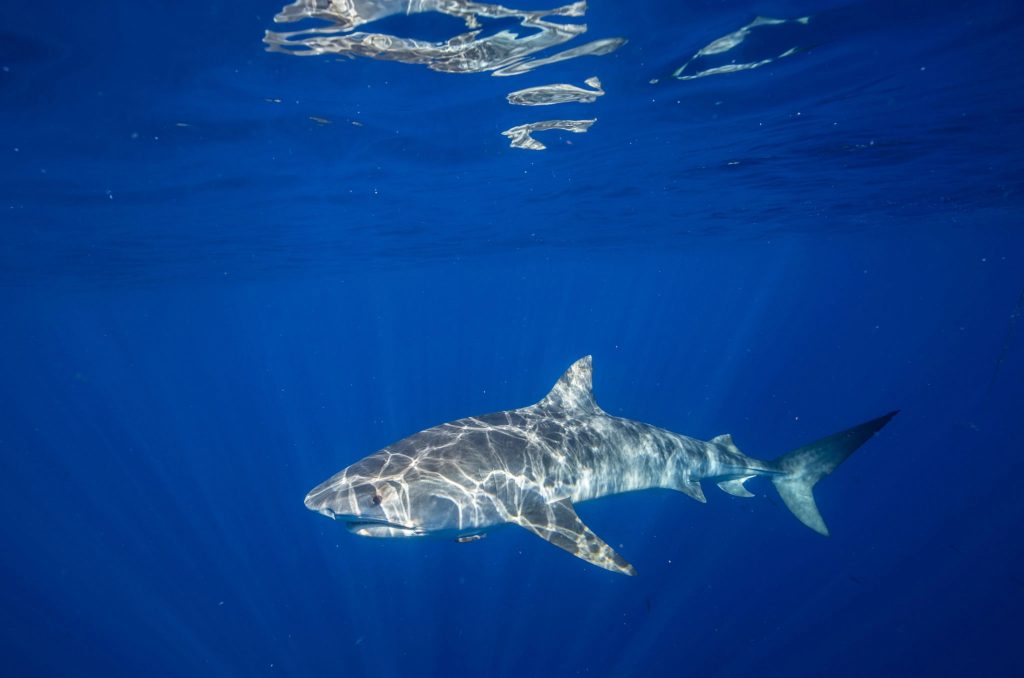
27. Report Reveals Australia’s Role in Global Shark Fin Trade
A new report from Humane Society International and other groups scrutinizes Australia’s role in the shark fin trade. More than a third of sharks and rays are threatened with extinction. Australia exports shark fins to China and Hong Kong, and imports a significant volume, including from countries that do not ensure sustainable fishing practices. The report reveals that trade is subject to few if any sustainability tests. It also criticizes a lack of accuracy in import and export data, casting doubt over the identity of species caught and the scale of the shark fin trade in and out of Australia. Meanwhile, regulatory gaps enable unsustainable and illegal shark finning. All fishing jurisdictions in Australia have legislation designed to prevent live shark finning, but the report finds this may still be occurring in some state/territory-managed fisheries in Western Australia, Queensland, and the Northern Territory.
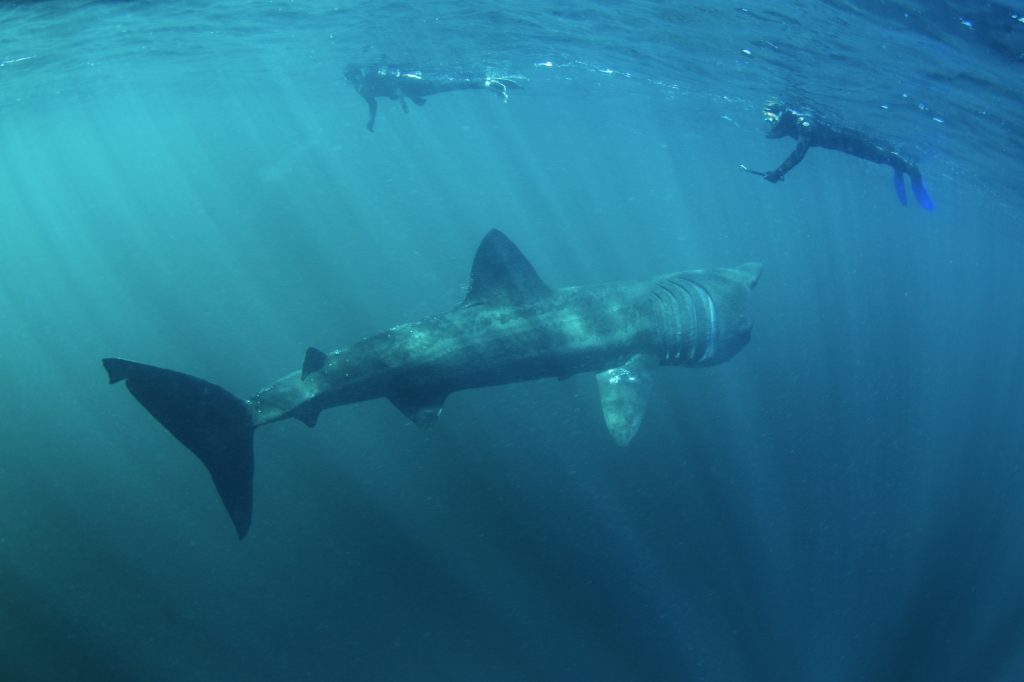
28. Basking Shark Courtship Behavior Uncovered in Hebrides
Fin-to-fin swimming, likely part of courtship, was observed in basking sharks for the first time. Video cameras attached temporarily to the sharks gave scientists an unprecedented view of their world. Basking sharks are usually solitary, and little is known about their breeding behavior. The researchers also recorded a full breach from the shark’s point of view. This may also be part of wooing, perhaps by showing off body size. Copulation was not captured, but other observed behaviors precede mating. The study took place in the Sea of the Hebrides, which attracts the fish in the summer and was recently declared a marine protection area, the first in the world designated to protect basking sharks. The researchers were surprised to find the sharks spent up to 88% of daylight hours near the seabed. Such information could inform new fishing restrictions, such as on bottom trawling.

29. Taiwanese Local Government Tackles Ocean Pollution with Residents
In Taiwan, the Changhua local government has launched environmental actions with residents related to ocean cleanup. The coastal province has several wetlands of international importance. The county is located at the confluence of the northern and southern currents, leaving it vulnerable to pollution. With an intertidal zone of up to 61 kilometers, trash comes in with the high tide, jamming the wetlands. Working with local residents, the government has been cleaning up the beaches and oceans. They have also put interceptors in the water, which divert waste into a collection system. Last year, the interceptors successfully prevented 152.4 tons of waste from entering the ocean via Taiwan’s rivers. In 2017, the county government launched the environmental protection fleet in partnership with the public. The fleet collects marine waste and brings it to the Harbor Inspection office for classification and recycling.
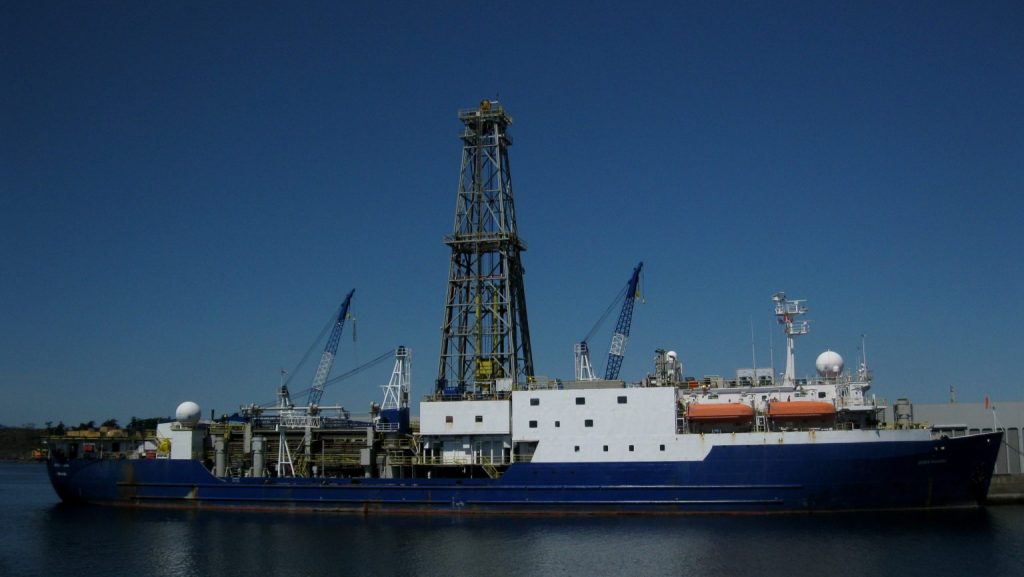
30. Utah Professor to Sail on Expedition Sampling Seafloor
Sarah Lambart, assistant professor of geology and geophysics at the University of Utah, will sail as a petrologist on the next expedition of the International Ocean Discovery Program (IODP). The research vessel JOIDES Resolution (JR) will sail from Reykjavik, Iceland in August. During the expedition, the team will drill rock cores in the ocean floor along the continental margin. The mission explores a geological anomaly associated with the breakup of North America and Europe and the formation of the North Atlantic Ocean. The break-up event generated a volume of magma that is too high to be explained by the type of volcanic activity that occurs along the Mid-Atlantic ridge today. After the expedition, Lambart and the members of the MagMaX lab will study the collected rocks, in particular the large mineral grains that can record information about the temperature and variability of the mantle source.




